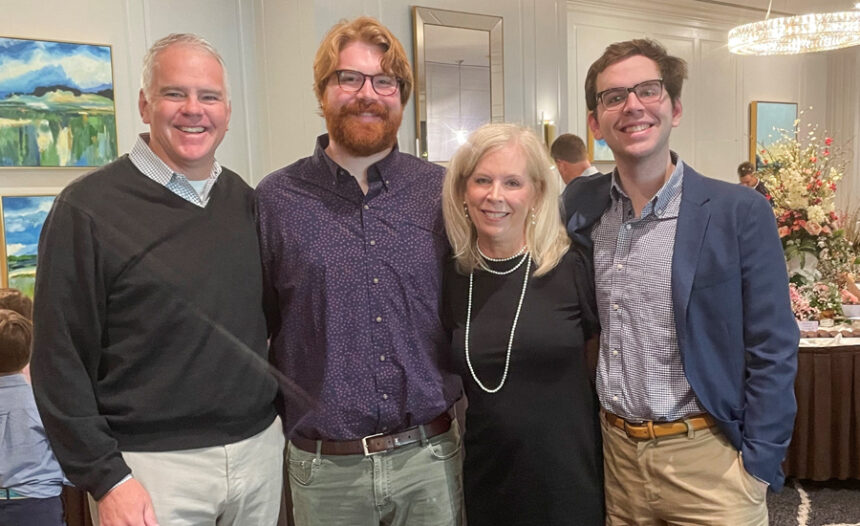When Missy Van Lokeren was diagnosed with metastatic breast cancer in 2018, she, like many people, turned to the internet.

“I was interested in how long I could live, how I could extend my life and how I could make my life better,” Van Lokeren says. “The internet said there was no cure, which is true, but I learned there were plenty of treatments. I found a lot of research that I didn’t understand but that I wanted to understand. It was a matter of life and death for me. That research meant I could live longer.”
The desire to understand the research led Van Lokeren to pursue a role as a patient advocate at the UNC Lineberger Comprehensive Cancer Center. Patient advocates share their experience and perspective with researchers, with the goal of improving the patient experience in clinical trials and ensuring that cancer research remains focused on the needs of patients.
Van Lokeren became involved with the Specialized Program of Research Excellence (SPORE) in Breast Cancer at UNC, which is one of seven programs recognized by the National Cancer Institute for collaborative cancer research that translates medical discoveries into clinical trials.
“At one of the meetings, a researcher spoke of the lack of live tissue available to use in research and the importance of using live tissue to study how cancer cells operate,” Van Lokeren says. “I shared my experience of being asked to donate tissue after my initial breast cancer diagnosis, in 2014, at a different institution.”
After that meeting, UNC Health surgical oncologist Philip Spanheimer, MD, a researcher at Lineberger Cancer Center, contacted Van Lokeren about her previous experience.
“We realized we were missing opportunities to engage patients in the ability to participate in and increase the impact of research,” he says. “We began looking for ways to more actively enroll patients by developing the partnership in research.”
From there, the PART (Patients and Researchers Together) Program began.
How Tissue Donation Works
Tissue donation is a vital part of cancer research and can be meaningful to patients and researchers.
Although multiple types of tissue are useful for research, the initial priority of the PART Program is tumor samples. Rather than being processed with a preserving agent for long-term storage, donated samples are kept in a live state that mimics how they are in the body.
“My lab studies how breast cancer genes express themselves and how tumors respond to treatment,” Dr. Spanheimer says. “We can create lab models of disease to evaluate treatment strategies, but it requires live tissue to develop experimental models that most closely resemble human disease.”
When Dr. Spanheimer talks to patients about his research, many will consent to tissue donation, but others aren’t aware of the option.
The PART Program’s leaders—including clinicians, researchers and patient advocates—are working on how to best communicate with patients and motivate them to donate at a time when they are focused on making decisions about treatment.
For Van Lokeren, the decision to donate tissue was easy, but she understands that other people might have concerns.
“It’s important for patients to know that the decision to donate does not affect your medical treatment in any way,” Van Lokeren says. “This is extra tissue that would otherwise be discarded, which is a shame when it can be used in a meaningful way to find better treatments and cures.”
Showing the Effect of Tissue Donation

One of the main goals of the PART Program is to ensure that people who donate tissue learn about the results of their donation. Van Lokeren and Dr. Spanheimer say that this focus on engaging patients as advocates and partners after the donation makes UNC’s tissue donation program distinct.
“We are educating patients to recognize the value they can provide to the next generation of patients,” Van Lokeren says. “Future patients are benefiting from this tissue. PART is determined to reach out to donors so they can see how their donation leads to improved and extended life.”
Dr. Spanheimer adds, “I have learned so much from working with the patient advocates. As a researcher and a surgeon, it’s important that I share data and results that matter to patients. We want to provide optimal care now but also find out what causes breast cancer and why certain treatments work, so we can help patients in the future.”
Dr. Spanheimer has already published research based on live tissue samples collected at UNC.
“We know that differences in the cellular composition of tumors affect response to treatments, but we lacked ways to assess how those responses are different in different cell types,” he says. “By building a model using patient tissues, we were able to assess how individual cells responded to treatment and consider why certain cells were less responsive to treatment. We can use that information to develop and investigate precise regimens that target specific cell populations within more complex tumors.”
For patients like Van Lokeren, that work represents the promise of extended and improved life.
“The drug that is keeping me alive right now did not exist eight years ago,” Van Lokeren says. “All cures and treatments start in a lab. I’m very interested in helping to find the next drug that can keep people alive. When you donate tissue, you can feel grateful that you’re contributing to treatment that will help others.”
Ask your doctor how to donate tissue for research. Need a doctor? Find one near you. Learn more about the PART program at UNC Health.

